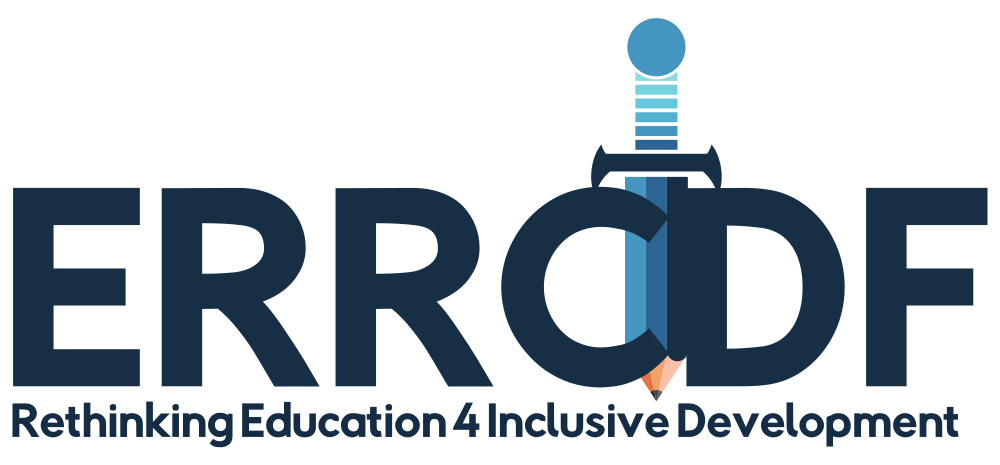Nexus between Family Socioeconomic Status and Alcohol Consumption Moderated by Religiosity among Secondary School Adolescents in Uganda
Keywords:
Family socioeconomic status, Alcohol consumption, Religiosity, Secondary school adolescentsAbstract
This paper focuses on the relationship between family socioeconomic status and alcohol consumption. It further covers the moderation effect of religiosity on the relationship between family socioeconomic status and alcohol consumption among secondary school adolescents in Bushenyi Ishaka Municipality in Uganda. The study employed a cross-sectional survey with quantitative method of data collection and analysis. The schools for the study were selected through a stratified proportionate sampling method. Schools were categorised into two strata; government and private secondary schools from which 6 of them were sampled and simple random sampling techniques were used to arrive at the final sample study of 404 participants from six schools. Data was collected using a self-administered questionnaire with standardised scales. The instrument comprised biodata, SES scale, religiosity, spiritual scale for Youth, and AUDIT Test for Alcohol use. Responses were obtained from a total of 404 participants who included females as the majority (54.7%). The mean age of the students was 15.91. Results show that there was a significant relationship between family socioeconomic status (SES) and alcohol consumption. Religiosity had significant positive moderation effect on the relationship between family socioeconomic status and alcohol consumption among secondary school adolescents. Religiosity is a strong resilience and deters adolescents from consuming alcohol regardless of their family socioeconomic status.
References
Aggarwal, O. P., Bhasin, S.K., Sharma, A.K, Chhabra, P., Aggarwal, K, & Rajoura, O.P. (2005). A New Instrument (Scale) for Measuring the Socioeconomic Status of a Family. Indian Journal of Community Medicine, 30 (4) 110-114.
Al-Kandari, F., Yacoub, K., & Omu, F. (2001). Initiation factors for substance abuse. Journal of Advanced Nursing, 34(1): 78–85.
Bahr, S. J., & Hoffmann, J. P. (2008). Religiosity, peers, and adolescent drug use. Journal of
Drug Issues, 38, 743-769.
Benjet, C., Borges, G., Medina-Mora, M., Fleiz, C., Blanco, J., Zambrano, J., &, Ramirez, M. (2007). Prevalence and socio-demographic correlates of drug use among adolescents: Results from the Mexican. Adolescent Mental Health Survey. Addiction, 102, 1261-1268.
Blum, R.W., Beuhring, T., Shew, M.L., Bearinger, L.H., Sieving, R.E., and Resnick, M.D. (2000). The effects of race/ethnicity, income, and family structure on adolescent risk behaviours. American Journal of Public Health, 90(12), 1879–1884.
Brittany, C. H . & Hernandez (2011). The religiosity and spirituality scale for youth Development and Initial Validation. LSU Doctoral Dissertations. 2206. Validity. Thesis for the Degree of Doctor of Philosophy of Louisiana State University.
Collins, S.E., Malone, D.K., Clifasefi, S.L., et al. (2012). Project-based Housing First for chronically homeless individuals with alcohol problems: Within-subjects analyses of two-year alcohol trajectories. American Journal of Public Health, 102,511–519.
Geckova, A., van Dijk, J.P., Groothoff, J.W., & Post, D. (2002). Socio-economic differences in health risk behaviour and attitudes towards health risk behaviour among Slovak adolescents. Social and Preventive Medicine, 47, 233-239.
Goodman, E., & Huang, B. (2002). Socioeconomic status, depressive symptoms, and adolescent substance use. Archives Pediatric Adolescent Med, 156,448-453.
Hanson, M. D., & Chen, E. (2007). Socioeconomic status and substance abuse behaviours in adolescents: the role of family resources versus family social status. Journal of Health Psychology, 12(1), 32-35.
Humensky, J. L. (2010). Are adolescents with high socioeconomic status more likely to engage in alcohol and illicit drug use in early adulthood?. Substance Abuse Treatment, Prevention, and Policy, 5 (19), 1-10.
Kaduri, P. (2008). Social Cognitive Determinants of Smoking Behavior Among Junior Secondary School Students, Kinondoni District, Dar as Salaam. Unpublished masters dissertation, University of Dar as Salaam.
Koenig, H. G. (Ed.) (1998). Handbook of religion and mental health. San Diego: Academic.
Koenig, H. G., McCullough, M. E., & Larson, D. B. (2001). Handbook of religion and health.
New York: Oxford University Press.
Kokkevi, A., Richardson, C., Florescu, S., Kuzman, M., & Stergar, E. (2007). Psychosocial correlates of substance use in adolescence: A cross-national study in six European countries; Drug and Alcohol Dependence, 86 (1), 67-74.
Mbatia, J. & Kilonzo, G. (1996). Drug abuse prevention. A handbook for educators in Tanzania; 11-16. Dar as Salaam: MEHATA publication.
Mndeme, E (2003). Parental factors associated with drug use among youth attending the psychiatric unit at Muhimbili National Hospital. Unpublished masters dissertation, Muhimbili University of Health and Allied Sciences.
O’Malley, P.M,, Johnston, L.D., & Bachman, J.G.(1998) Alcohol use among adolescents. Alcohol Health Res World, 22, 85-93.
Pargament, K. I. (1997). The psychology of religion and coping: Theory, research, practice. New York: Guilford.
Sanchez, Z., Oliveira L., & Nappo, S. (2008). Religiosity as a protective factor against the use of drugs. Substance Use and Misuse, 43, 1476–1486.
Saunders, J. B., Aasland, O. G., Babor, T. F. de la Fuente, J. R., & Grant, M. (2001). Development of the Alcohol Use Disorders Identification Test (AUDIT): WHO Collaborative Project on Early Detection of Persons with Harmful Alcohol Consumption—II. Addiction. 88:791–804.
Sloane, D., & Potvin, R. .H. (1986). “Religion and delinquency: Cutting through the Maze.” Social Forces, 65, 87–105.
Sussman, S., & Dent, C.W. (2002). One-year prospective prediction of drug use from stress-related variables. Substance use, & Misuse, 35,717-735.
Tot, S.,Yazici, K., Yazici, A., Metin, O., Bal, N., & Erdem, P. (2004). Psychosocial correlates of substance use among adolescents in Mersin, Turkey. Public Health, 118, 588-593.
Vaughan, E. L., De Dios, M. A., Steinfeldt, J. A., & Kratz, L. M. (2011). Religiosity, alcohol use attitudes, and alcohol use in a national sample of adolescents. Psychology of Addictive Behaviors, 25, 547-553.
Wallace, J. M., Delva, J., O'Malley, P.M., Bachman, J.G., Schulenburg, E., Johnston, L.D., & Stewart, C. (2007). Race/Ethnicity, Religiosity and Adolescent Alcohol, Cigarette and Marijuana Use. Social Work in Public Health. 23, 193-213.
Wichstrom, L. & Pederson, W. (2001). Use of anabolic-androgenic steroids in adolescence: Winning, looking good or being bad? Journal of Studies on Alcohol, 62, 5-13.
Wills, T. A., Gibbons, F. X., Gerrard, M, Murry V. M., & Brody, G. H. (2003). Family communication and religiosity related to substance use and sexual behaviour in early adolescence: a test for pathways through self-control and prototype perceptions. Psychol Addictive Behaviours, 17:312-323.
Downloads
Published
How to Cite
Issue
Section
License
Copyright (c) 2020 Athanansio Bashaija, Aloysius Rukundo

This work is licensed under a Creative Commons Attribution-NonCommercial-NoDerivatives 4.0 International License.










